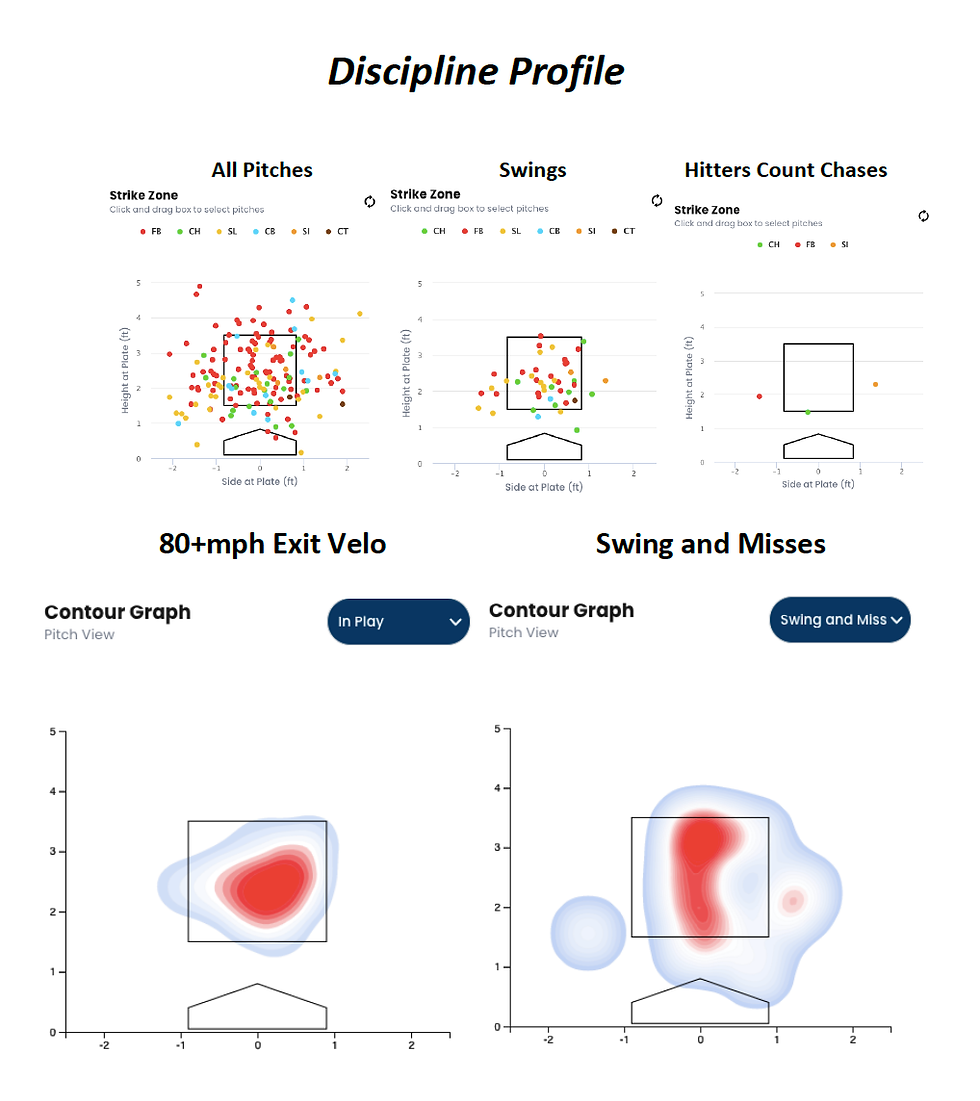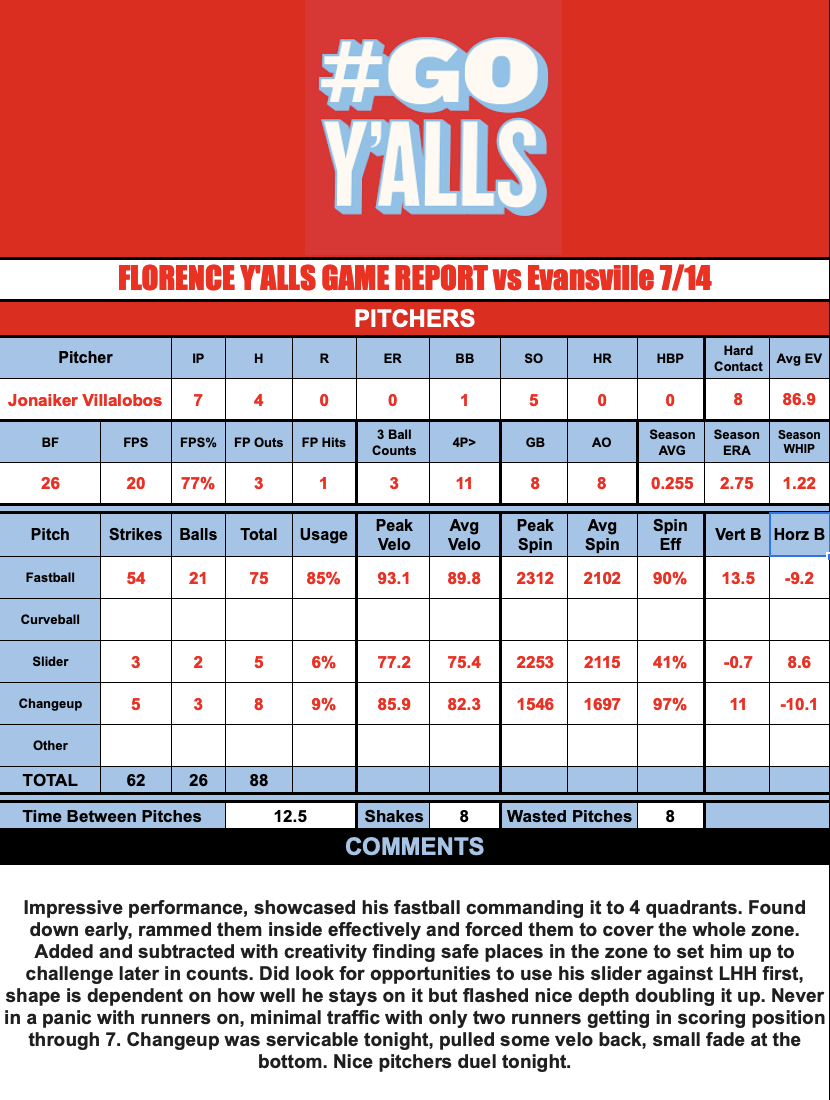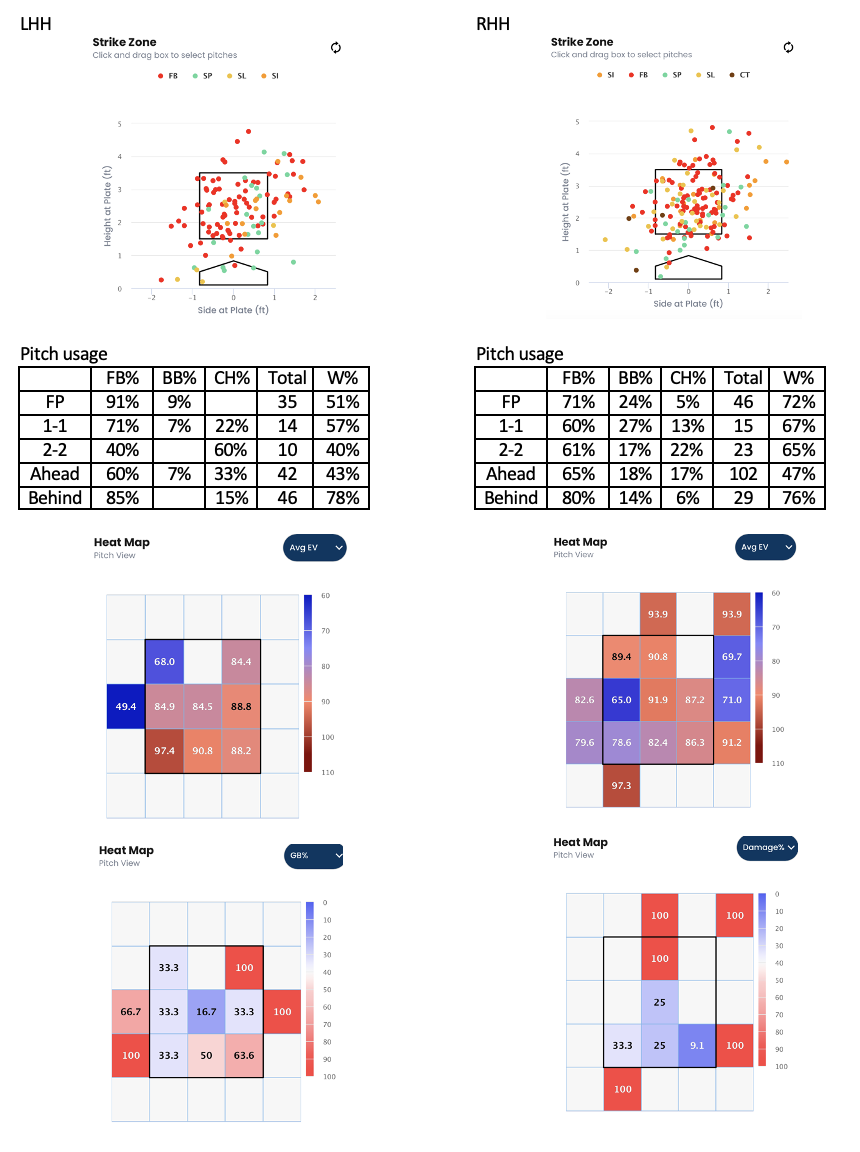Analytics and Player Development: A Day in the Life
- Connor Dwyer

- Sep 13, 2021
- 9 min read
Updated: Dec 15, 2021
Connor Dwyer

From Left to Right: Andrew Rueter, Jared Cheek, Max DelBello, Connor Dwyer, Chad Rhoades
For every Major League Baseball team, having a full-blown analytics and player development department is a given. However, for most other professional teams, possessing such a luxury is simply not possible.
Independent Leagues, such as the Frontier League, the Atlantic League, and the American Association have for years served as places where ballplayers can gain professional experience and exposure to Major League organizations. They are generally low-budget, low-market teams with players making very limited money.
So, for just about every independent team, having an analytics and player development department is simply unfeasible. Well, that was until a few months ago.
In March of 2021, I was hired to be a part of the first-ever analytics and player development department in Independent Professional Baseball. The team I was fortunate enough to work for was the Florence Y’alls of Florence Kentucky. For myself, and the rest of the analytics and player development team, the summer which ensued was one we will never forget.

Y’alls Ballpark, Florence Kentucky
To give you an idea of what working in the first-ever analytics and player development department in Independent Pro-ball was like, I figured I’d walk you through a typical game day at home. On the road, our job was a bit condensed, as we didn’t arrive at the field until early afternoon. But at home, we had a full day of work.
Before I get started, however, it probably makes sense to explain some of the basics, like how I got the position, and who I spent the summer working with. For starters, I found the job post online in early January and submitted my application and resume. After interviewing twice with the Y’alls manager Brian White, I was offered the position to spend the entire summer with the team. Once in Florence, I worked under Max DelBello, who served as the Analytics Coordinator and Assistant Coach for the Y’alls.
On the analytics and player development side of things, I worked primarily with Max and my fellow intern, Andrew Rueter, a senior pitcher from California. For three months, the three of us spent countless hours together in the clubhouse, on the field, and on the road with the team. I couldn't have asked for better teammates.
9:00 am – Rise and Grind
I’m a morning person, so being up and out of the house by 9 am was fine by me. Most days, I was the first or second person to walk into the clubhouse. Walking into our little office, which had just a thin wall separating us from the locker room, I started my day by flipping on SportsCenter and getting to work.
Although we were an analytics and player development team, we were also entirely responsible for all advanced scouting endeavors throughout the season. So, on the first day of each series, we would spend about two or three hours ensuring our players and coaches knew the competition and were as prepared as possible.
This included putting together pitching logs, analyzing hitters, and putting together a game plan for the opposing pitcher. Additionally, we utilized spray charts and offensive data collected to create defensive positioning cards for each of our infielders and outfielders. This ensured that they were in the most optimal position for each opposing hitter.
One of the coolest scouting tools we created was our catching scouting reports. For each series, Andrew and I would put together a one-page summary for each pitcher on our staff. This report (see below) showed where in the zone a pitcher liked to throw each one of his pitches. This gave our catchers an idea where and how guys liked to use their pitch arsenal and allowed them to develop a stronger rapport with each pitcher.

When it came to scouting, Andrew and I were resources for both players and coaches. At the beginning of each series, I would speak with our pitchers about opposing hitters’ tendencies, and how we should approach them during games. For that ten minute meeting every few days, our pitching coach stepped back and gave us the floor.
11:00 – Coaches Meeting and Advertising Players
Once scouting reports were created and delivered, Max, Andrew, and I would take some time to recap the previous game. We discussed our players’ performance, how our opposition played, and the decisions made during the game.
During this hour or two, we would meet with Pitching Strategist, Chad Rhoades, and our hitting coach, Drew Martinez. For our coaches, being constantly informed about the data we collected was an absolute priority.
To keep both them and our players on the same page, we wrote daily pitcher and hitter game reports, summarizing game results and their progress. These reports were a combination of basic stats, analytical data, and our comments about the player’s performance. The more advanced data came from our Trackman-like, in-game tracking system called Yakkertech.
As a staff, we also liked to keep track of things most other teams don't focus on, like time in between pitches, wasted pitches (balls after 2 strikes), and the number of times a guy shook the catcher off. This gave us a better understanding of a pitcher's tempo and rapport with the catcher. With most of the comments written by the coaching staff, these reports gave us a great way to record and track a player's progress. For that reason, they were posted on social media, so that Major League Organizations could also keep track of our players.
After scouting was complete and we met with the coaches, we worked on advertising and marketing the Florence players to big league teams. Utilizing Yakkertech, we put together analytical packages, sent them to team officials, and answered any questions they had. Over the course of the season, these packages were vital in two of our pitchers being signed. By 1:00 pm each day, the players started to filter in, and our day shifted from scouting and data to player development and game prep.
1:00 – Player Meetings
With players coming in to begin their work for the day, our role became very hands-on and interactive. Before even taking a step onto the field, many players would stop by our office to watch video, see where they stand in terms of the data, or ask what they need to improve on.
Our guys trusted us and valued the work we did. Because I had taken the time to get to know each of them, we were able to have real, down-to-earth, productive conversations. These conversations led to guys making adjustments and finding new ways to improve on the field. It wasn’t at all uncommon for a guy to come into our office to thank us for the advice we had given them. Our department helped guys become better players, and they were extremely grateful for that.
For the most part, however, we were very limited in the quantitative information we provided the players. One of the biggest lessons I learned in my time with the Y’alls was how damaging too much data can be. As professionals, our players’ job is to compete and win on the field.
During the course of a game, players should not be focused on their spin rate, vertical break, or launch angle. They should be focused on winning. For that reason, we erred on the side of caution when providing analytics to players. Depending on the individual player, their values, and how they play the game, we would specify exactly what data we wanted them to see, and what data we would hold from them.
For our organization, providing data that was tailored to each player was extremely important. A prime example of this personalization were the biweekly analytical reports we generated for each player.
After talking with our coaching staff and the individual player, we would use the game data collected on Yakkertech to put together reports. This helped keep our players on task and informed on what they needed to work on.
Example of Individual Pitching Report

Example of Individual Hitting Report
For the first hour or so of players being in the clubhouse, communication was the name of the game. Constantly talking to guys and showing them what we can do helped us as a department to build the trust of the team. Our job was to help them get better, but without their trust we were useless.
2:30 – Pitchers Practice
By the time 2:30 rolled around, it was time for our pitchers to stretch, play catch, throw bullpens, and condition. In Florence, we took extreme care to ensure that pitchers practice was done correctly and taken very seriously. This was the time for our guys to work on their craft and become 1% better every day.
For our department, pitchers practice was our time to work with each guy one on one. In conjunction with our pitching strategist, we monitored each guy’s throwing program, ensuring strong delivery and mechanics. For example, If a pitcher struggled to drive the ball down in the zone, or continuously leaked forward, myself or Andrew would work with him for a week or two to correct the issue. Our pitching strategist worked with us each day on how to coach professionals, and working with pitchers gave us hands-on experience.
3:30 – Batting Practice
Once pitchers practice was complete, the position players would start batting practice, with the pitchers “shagging” in the outfield. I personally spent the majority of batting practice in the outfield. During this short but hyper-important hour each day, I talked to pitchers about their delivery, usage, and in-game approaches. For me, this was the time to develop relationships with each guy and learn more about them as a person.
As a very analytically inclined person, understanding that players are people and not simply numbers was something I continually needed to remind myself of. Constantly having these conversations with pitchers helped me tremendously in that regard. After all, if you want to make a change based on analytics, you have to get the player to buy in. Without a trusting relationship, no change will ever be made.
For me, this time on the field pregame was a great way to balance out the quantitative portion of my job. I was lucky enough to learn what it takes to talk to and coach a professional player. I learned how to correctly incorporate data into player development, and most importantly, I learned how important building relationships is.
5:00 - Pregame
In the time between batting practice and game time, most players spent the time relaxing, fueling up for the game and mentally preparing for the task ahead. During this hour and a half, Max, Andrew, and I took some time to relax and finish any pre-game work we had.
Around 6:00 pm or 30 minutes before game time, we finalized our game plan, threw on our uniforms, and headed down to the field. Once in the dugout, we ensured each position player had their defensive positioning card for that night and got Yakkertech up and running for that night.

From Left to Right: Brian White, Drew Martinez, Chad Rhoades, Dave Heilbrunn, Max DelBello, Connor Dwyer
6:30 – Game time
After nearly 10 hours of prep and pre-game work, it was game time. For us, game time meant tagging each pitch and the result on Yakkertech, which uses camera-based technology to record data about each pitch (see below). We also kept track of very basic benchmarks like free bases allowed and quality at-bats. Besides that, this was the time to enjoy a baseball game, watch our guys compete, and see the Y’alls win.

10:00 – Postgame
Once the final out was recorded, our job was 90% done for the day. Following a quick post-win celebration, our players left the stadium to rest up for the day ahead.
By around 11:00 pm, our department and the rest of the coaching staff had the clubhouse to ourselves once again. We spent the next hour or so uploading the Yakkertech data from the game, generating and analyzing game reports like an Umpire Analysis, and catching up with the coaches. By midnight each game day, we were exhausted and ready to head home.
Most days we spent about 15 hours at the field, giving us a limited time to rest, and prepare for the next day. Was it worth it? Of course, it was. The Y’alls ended the year as the number one team in the league, going 58-38 and winning the West Division of the Frontier League!
As a part of the first analytics and player development department in independent professional baseball, we had an opportunity to accomplish something very special. And we did just that.

Looking back now on my summer experience with the Florence Y’alls, I truly can’t believe how much I have grown and developed as a baseball-minded thinker. I learned what the professional baseball grind is all about, how to talk to professional players, and what it takes to succeed. I learned how to coach, and how to develop players through data.
But most importantly, this summer I learned that players are not numbers. Building trusting relationships with each and every player is just as important as finding quantitative ways for them to improve. If you don’t have a relationship with a guy, there isn’t a single piece of data that will do any lasting good.
After my summer experience with the Florence Y’alls, I hope to continue my progression working in professional baseball. I am currently looking for a similar position with a Major League Organization, working in minor league analytics and player development. For any questions, comments, or inquiries, I can be reached at cdwyer16@fordham.edu.










Comments